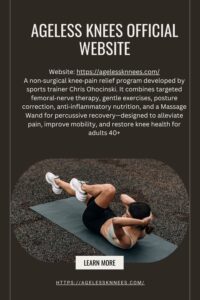Who Needs HACCP From Farmers to Food Service Chains
Imagine a bustling food processing plant—conveyor belts whirring, workers slicing fresh produce, and the aroma of spices filling the air. Now picture one tiny slip, like a contaminated ingredient, bringing it all to a screeching halt. Recalls, angry customers, and a battered reputation follow. Sounds like a gut punch, doesn’t it? That’s where HACCP certification comes in, like a trusty sous-chef keeping your kitchen safe and your business thriving. It’s not just a piece of paper; it’s a proven system to ensure your food is safe from farm to table.
If you’re a food manufacturer or processor, you’ve likely heard HACCP—Hazard Analysis and Critical Control Points—tossed around in industry chats. But what’s the fuss about? Why should it be your top priority? Let’s dig in, explore why HACCP certification is a must, and map out how to get there—without getting lost in a sea of jargon.
What’s HACCP, and Why Does It Matter?
HACCP certification at its core, is a food safety system designed to identify and control risks before they become problems. Think of it as a recipe for preventing foodborne disasters, whether you’re making frozen pizzas, canned veggies, or artisanal sauces. It’s about spotting hazards—like bacteria or foreign objects—and setting up checkpoints to keep them at bay. For food manufacturers and processors, HACCP certification is your proof that you’re not just cooking up great products but also keeping safety first.
Here’s the deal: food safety isn’t just a regulatory box to check. It’s personal. Your customers trust you to deliver food that’s safe to eat, whether it’s a snack for their kids or a meal for a family gathering. HACCP certification is like a handshake with your consumers, saying, “We’ve got your back.” And with regulations like the FDA’s FSMA (Food Safety Modernization Act) tightening the screws, it’s a critical tool to stay compliant and keep your business humming.
Why HACCP Certification Is a Big Deal for Food Manufacturers
You know what’s nuts? Foodborne illnesses hit millions every year, and recalls can cost companies billions—$10 billion globally in 2023, according to some industry reports. One bad batch can spark a PR nightmare, legal battles, and a drop in customer trust. HACCP certification is your shield against that chaos. Here’s why it’s non-negotiable:
- Customer Trust: People want food they can eat without worry. HACCP certification shows you’re serious about safety, like a seal of approval on every package.
- Regulatory Compliance: It aligns with FDA, USDA, and global standards, making audits less of a headache.
- Risk Control: HACCP helps you catch hazards—like E. coli or metal shards—before they reach the consumer.
- Market Edge: Big retailers like Costco or Kroger often require HACCP from suppliers. It’s your ticket to bigger shelves.
But let’s be honest: getting HACCP certified isn’t like tossing a salad together. It takes planning, teamwork, and a bit of elbow grease. So, what’s the path look like?
Your Roadmap to HACCP Certification
Alright, let’s roll up our sleeves and get practical. Achieving HACCP certification is like prepping for a big catering gig—you need a solid plan, the right tools, and a team ready to execute. Here’s how to make it happen:
Step 1: Build Your HACCP Team
You can’t do this solo. Pull together a crew from across your operation—production, quality, sanitation. Your plant manager, line supervisors, and even a few floor workers should be in the mix. Show leadership the stakes—those billion-dollar recalls or the chance to land a contract with a major retailer. It’s not just about safety; it’s about growth.
Step 2: Define Your Scope
What products or processes are you certifying? Your entire facility or just a specific line, like your frozen meals? Narrowing the scope keeps things manageable. A small processor might focus on their sauce line, while a big manufacturer might cover all operations.
Step 3: Conduct a Hazard Analysis
This is where you get down to business. Identify potential hazards—biological (like salmonella), chemical (like pesticide residues), or physical (like glass fragments). Look at every step, from receiving ingredients to shipping products. Software like FoodDocs or Safefood 360° can help map these risks.
Step 4: Identify Critical Control Points (CCPs)
CCPs are the make-or-break moments where you can stop hazards in their tracks. Think cooking temperatures, metal detectors, or sanitation checks. For example, a poultry processor might pinpoint cooking as a CCP to kill bacteria. Set clear limits—like a minimum cooking temp of 165°F—and monitor them religiously.
Establish Monitoring and Corrective Actions
Each CCP needs a plan—how you’ll check it and what you’ll do if something goes wrong. Maybe you use thermometers to check cooking temps or X-ray machines for foreign objects. If a CCP fails, have a fix ready, like reprocessing a batch or tossing contaminated product.
Train Your Crew
Your team is your first line of defense. Train them on HACCP principles, from spotting hazards to logging data. Make it engaging—use stories, like that time a competitor’s recall went viral, to hammer home why this matters. Nobody wants to be the next headline.
Get Audited
Here’s where it gets real. A third-party auditor, like NSF or SGS, will review your HACCP plan and processes. They’ll check if your CCPs are solid and your records are tight. Pass, and you’re certified. Fail, and you’ll need to plug the gaps. It’s like a health inspection on steroids.
Keep It Rolling
HACCP certification isn’t a one-time thing. You’ll need regular reviews, updated plans, and ongoing training. Food safety risks—like new pathogens or supply chain issues—evolve, so your plan has to stay sharp.
Sounds like a lot of work, right? It is. But the payoff—safer products, happier customers, and a stronger brand—is worth every minute.
The Emotional Weight of Food Safety
Let’s take a breather. Think about the last time you shared a meal with loved ones—the laughter, the clinking plates, the joy of good food. Now imagine the heartbreak if that meal made someone sick. Food safety isn’t just about rules; it’s about protecting those moments. HACCP certification is your way of saying, “We care about every bite.” Doesn’t that feel like a responsibility worth owning?
Common Pitfalls (And How to Dodge Them)
Here’s the thing: the road to HACCP certification isn’t all smooth. You’ll hit snags, and that’s normal. Here are a few to watch out for:
- Budget Blues: Certification costs—audits, training, equipment—can run $5,000 to $50,000. But a recall costs way more. Think of it as insurance for your brand.
- Time Squeeze: The process can take 3 to 12 months. Start with high-risk products, like raw meats, to build momentum.
- Team Pushback: Workers might grumble about extra paperwork. Make it personal—show how it protects their jobs and customers’ health.
- Plan Overload: HACCP’s seven principles can feel like a puzzle. Break them down and tackle one step at a time.
Pro tip: consider a consultant who knows food safety inside out. Firms like Food Safety Plus or Intertek can guide you, saving time and headaches.
Beyond Compliance: The Bigger Picture
HACCP certification isn’t just about dodging fines; it’s about building a culture of safety. It’s about empowering your team to treat every product like it’s going on their own plate. In the food industry, where trust is everything, that mindset is a goldmine.
There’s a ripple effect, too. Certified processors often land bigger clients, from grocery chains to restaurants. Your suppliers step up their game. Your employees take pride in their work. Even regulators give you a nod. It’s like leveling up your entire operation with one system.
And let’s talk trends. With clean eating, plant-based diets, and sustainability on the rise, consumers are pickier than ever. HACCP certification shows you’re not just keeping up—you’re setting the standard.
Your Next Steps to Food Safety Greatness
So, what’s the plan? If you’re a food manufacturer or processor, HACCP certification isn’t just a nice-to-have—it’s your key to trust and growth. Start by assessing your current safety practices. Get your team pumped. Maybe bring in a consultant to light the way.
Here’s a quick checklist to kick things off:
- Map Your Hazards: Pinpoint risks across your process—ingredients, equipment, packaging.
- Rally Leadership: Get execs to champion safety as a core value.
- Train Smart: Equip your team with practical, engaging training.
- Choose Wisely: Partner with auditors who know food processing inside out.
Honestly, it might feel like herding cats at first. But once you’re HACCP certified, knowing every product you ship is safe? That’s a win worth celebrating. So, what do you say—ready to make food safety your superpower?














Post Comment